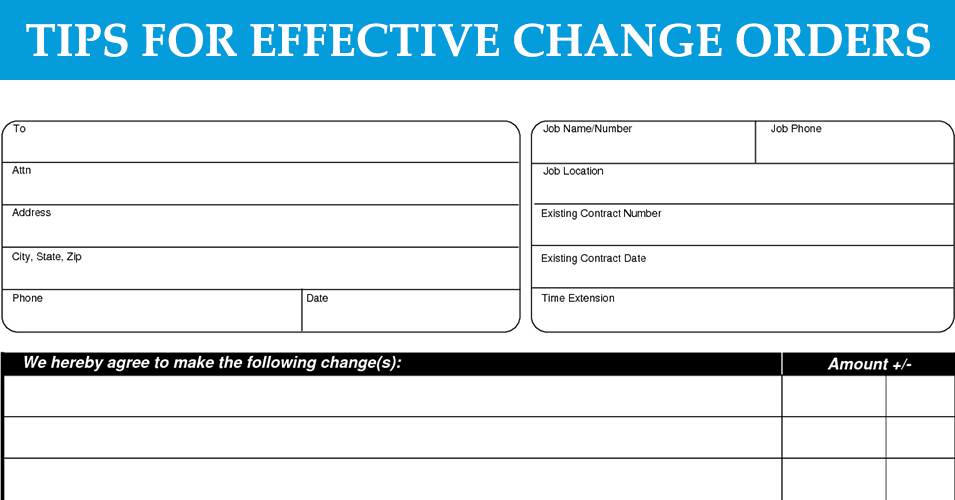
Run your business more efficiently with SAP Business One

In the construction industry, change orders are a fact of life. The trick is making them a profitable one! Managing change orders wisely can make the difference between a successful job and a losing one. Here are six tips to better managing the process:
This may sound obvious, but contractors often assume things about approval procedures that aren’t reflected in the legal language. For instance, the markup percentage for change orders should be agreed on and documented. Be particularly careful when working on a job with an unusual or unfamiliar contract type.
Generally, it’s best to wait until a change order is approved in writing before beginning out-of-scope work. Approved change orders usually allow you to adjust incurred costs, total estimated costs and total contract price. If quick approval isn’t feasible, recognize that unpriced or unapproved change orders can negatively affect your financial statements.
Additional work almost always requires additional time, and this should be spelled out clearly in the change order. Don’t assume the owner knows this or wait until the end of the job to bring it up.
A complete discussion of change order accounting rules is beyond the scope of this article. But be aware that accounting missteps can have serious consequences.
For example, if you record change order costs in total incurred job costs to date without a corresponding adjustment to the total contract price and total estimated contract costs, sureties and lenders may find that you’ve excessively underbilled. And if you’re overly optimistic about the likelihood that you’ll collect change order revenue, it can cause project profitability to fade as it nears completion.
As you strive to provide great service, you may be tempted to perform work outside the contract’s scope when an owner decides or is required to change the building plans. But if the scope changes, you should be compensated accordingly. Of course, there are exceptions to every rule, as Tip #6 indicates.
In select cases, there may be benefits to working for free. For example, doing so can help you avoid conflicts and generate goodwill with an owner you’d like to work with again. You might also mitigate the impact of back charges and provide leverage for quicker release of retainage.
If you decide to provide additional work for free, document these freebies by providing the owner with a “no-cost change order.” This way, you’ll communicate the added value while tracking the expenses involved. Contact us to speak with one of our advisors.
Run your business more efficiently with SAP Business One
Expand Your Reach In Latin America With LATAM Desk Services